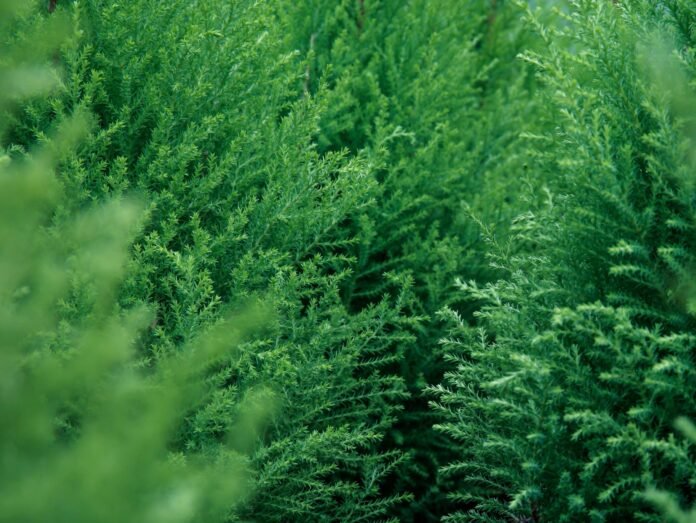Also known as: Checker-barked Juniper, Oak-barked Juniper, Thickbark Juniper, Western Juniper or (H’mm, somewhat interesting aliases!) Oakbark Cedar or Mountain Cedar
Family: Cupressaceae
Origin: From the southwestern US through west Texas into Mexico
Traditional, purported, and contemporary uses: Nifty Nugget of Knowledge: According to mythology, Juniper boughs have been used to ward off devils and witches. (Loud music playing, owners of 24 hours a day barking dogs, neighbors who operate motorcycles without mufflers, not so much, sadly.)
Native to central and northern Mexico as well as the southwestern United States, Alligator Juniper is a small to medium-sized tree reaching from 33 to 49 feet in height – hence, one of the largest of the Juniper species.
Its common name is derived from the tree’s distinctive bark of ashy gray on the outside and dark brown to black on the inside, deeply fissured or furrowed into rectangular or checkered plates – thus, appearing like Alligator skin.
It is drought-tolerant, highly adaptable to a wide range of living conditions, and thrives in dry, sunny, and hot locations – making it ideal for water-conscious landscaping. And if one has difficulties with undesirable insects, its aromatic compounds make it a natural pest control plant.
Additionally, due to its highly durable wood, it has been traditionally used in various crafts.
According to the Lady Bird Wildflower Center, it is also used for fuel and fence posts. (Wasn’t that a country-western song during the gas shortage period of 1973-74?) But unlike oil – beyond natural seed sprouts – it is a renewable resource, in that new shoots often appear at the base of cut stumps!
Interestingly, it depends upon which “authority” one wishes to believe, as there is significant understatement of the week – contention and disagreement within the botanical community as to whether or not they are dioecious (individual trees being either male or female) or monoecious, with a solitary tree having both the male and female reproductive organs. Whichever, however, they’re all long livers (and, maybe, short-spleened . . . don’t ya’ just really hate these terrible puns?) – which enjoy life for up to 500 years.
One of its primary purposes in life is that it is essential to wildlife, with its berries being eaten by birds and mammals. Additionally, it provides habitat, nest sites, shade, and shelter for a diverse array of avian species, as well as cover for deer, elk, and various smaller mammals.
Ethnobotanical, medicinal applications include its use as a remedy for stomach problems (digestive issues) and for use before and after childbirth.
Native Indians of the Americas have long used the bark and toasted twigs to relieve bruising and swelling, while others have treated diabetes with it.
It is purported to be a cure for loss of appetite, bloating, colds, and other chest ailments, effective in helping to relieve heartburn, intestinal gas, and – I have read that tea, made of its berries, has been used as a hunger suppressant.
Other ethnopharmaceutical applications include its use for neuralgia, rheumatism, and nocturnal bedwetting in children. Further traditional applications include the treatment of inflammation and pain.
Contemporarily, modern research is exploring this tree’s potential for treating various sorts of urinary tract infections and an array of digestive problems, while, as an antioxidant, striving to discern if its berries are effective in the protection against free radicals, which contribute to chronic diseases, as well as having anti-microbial activities against fungi and bacteria. (But, still consult with a healthcare professional before self-medicating.)
Alligator Juniper berries can be eaten raw, cooked, or preserved and are known for their sweet and palatable, though sometimes mealy, taste. They may be consumed directly off the tree, cooked or preserved, as well as dried and ground into a meal used to make a mashed dish or cakes.
Traditionally, members of the native American Yavapai tribe would soak ground berries in water, drink the liquid, and spit out the solids, which, I suspect, led to their expulsion from most formal, white tie, dining events!
In addition to their intriguing application as a spice or flavoring in various cooking recipes, these berries are used to season/spice gin and other alcoholic beverages, as well as incorporated into European dishes like sauerkraut and pickles.
As an aside, because of its significant durability, its wood is used for firewood, furniture making, and other construction, while its gooey pitch throws us a curve (No! Please. Not another one!), being used for both waterproofing and chewing gum!


